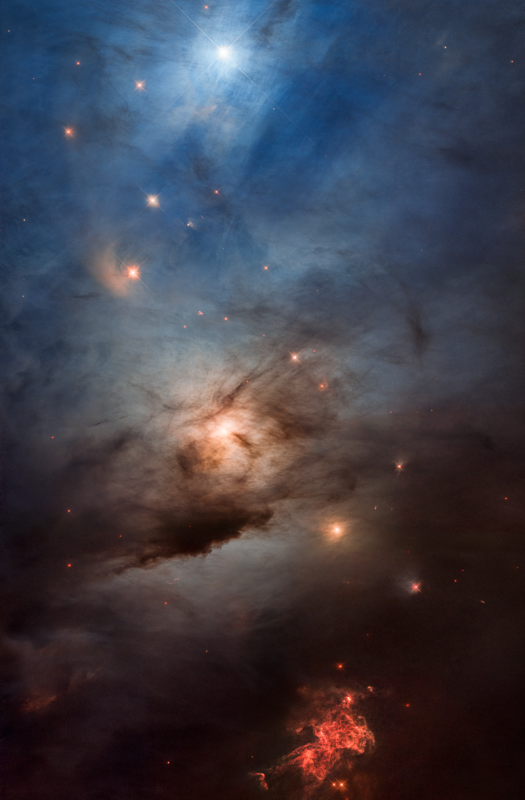Credit & Copyright: Science -
NASA,
ESA,
STScI,
Processing - Varun Bajaj (STScI),
Joseph DePasquale (STScI), Jennifer Mack (STScI)
Explanation:
In visible light NGC 1333 is seen as a
reflection
nebula,
dominated by bluish hues characteristic of starlight reflected by
interstellar dust.
A mere 1,000 light-years distant toward the heroic constellation
Perseus,
it lies at the edge of a large, star-forming molecular cloud.
This
Hubble Space Telescope
close-up frames a region just over 1 light-year
wide at the estimated distance of NGC 1333.
It shows details of the dusty region
along with telltale hints of contrasty red emission from
Herbig-Haro
objects, jets and shocked glowing gas
emanating from recently formed stars.
In fact, NGC 1333 contains hundreds of stars less than
a million years old, most still
hidden
from optical telescopes
by the pervasive stardust.
The chaotic environment may be similar to one in which our own Sun
formed over 4.5 billion years ago.
Hubble's
stunning image
of the stellar nursery was released to celebrate
the 33rd anniversary of the space telescope's launch.
Joseph DePasquale (STScI), Jennifer Mack (STScI)
Watch: Planet Earth's annual
Lyrid
Meteor Shower
1999 2000 2001 2002 2003 2004 2005 2006 2007 2008 2009 2010 2011 2012 2013 2014 2015 2016 2017 2018 2019 2020 2021 2022 2023 2024 2025 |
Январь Февраль Март Апрель Май Июнь Июль Август Сентябрь Октябрь Ноябрь Декабрь |
NASA Web Site Statements, Warnings, and Disclaimers
NASA Official: Jay Norris. Specific rights apply.
A service of: LHEA at NASA / GSFC
& Michigan Tech. U.
|
Публикации с ключевыми словами:
reflection nebula - star formation - отражательные туманности - звездообразование
Публикации со словами: reflection nebula - star formation - отражательные туманности - звездообразование | |
См. также:
Все публикации на ту же тему >> | |
